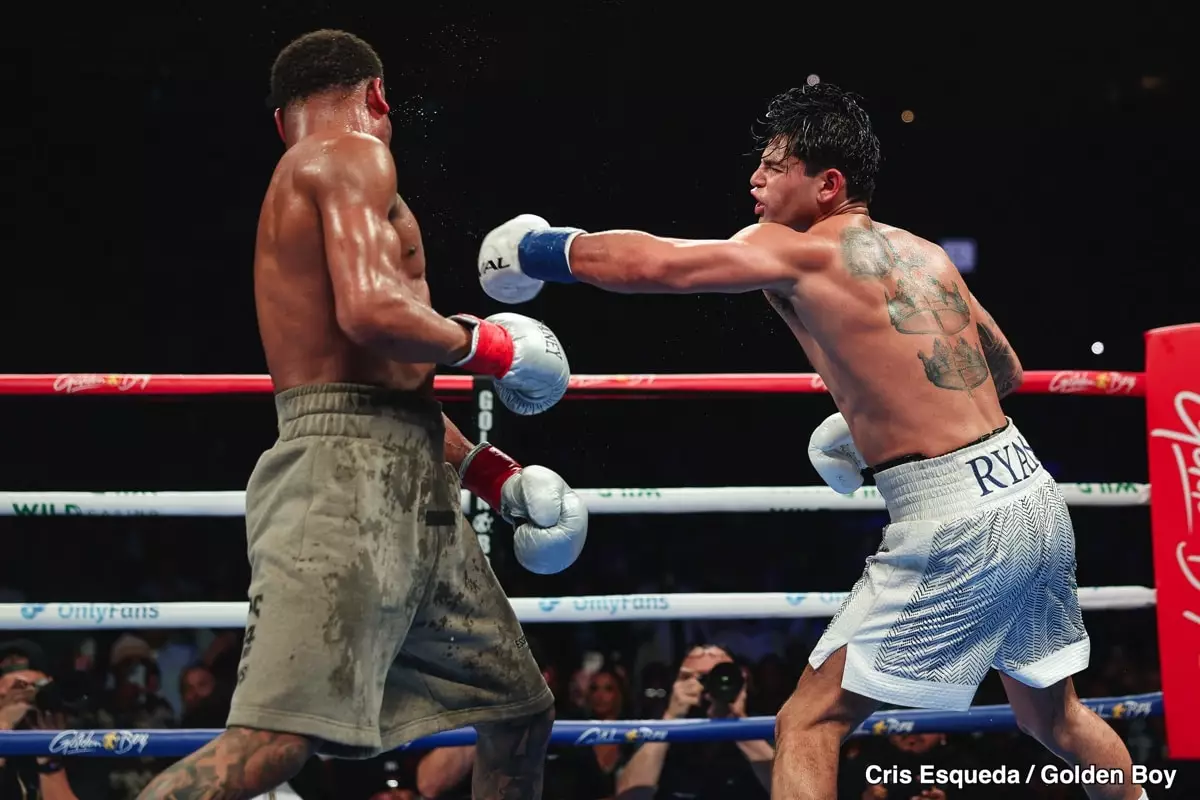The recent decision by Ryan Garcia and Devin Haney’s teams to opt for tune-up fights instead of an immediate rematch has stirred a significant amount of debate within the boxing community. May 2nd marks a pivotal date, as it presents a crossroads not only for the fighters themselves but also for the future of their legacies. This article delves into the implications of their choices, examining who truly needed the advantage of a preparatory bout, and the potential dangers these strategies pose.
At the heart of the decision is a critical question: who necessitated a fight to warm up their skills more—Haney, who suffered a defeat earlier, or Garcia, who bears the weight of an impressive record? For Haney (31-0, 15 KOs), the sting of a loss looms large, as he was not only defeated but also faced three knockdowns during that bout against Garcia (24-1, 20 KOs). On the other hand, Garcia is generally viewed as being in a more favorable position, as he prepares to face Rolando “Rolly” Romero, a fighter who was notably knocked out by Isaac Cruz. The mismatch suggests that Garcia’s path to victory seems much clearer than Haney’s.
When contrasting their upcoming opponents, the stakes are evidently skewed. While Garcia is likely to secure a win against Romero, Haney’s matchup with former unified champion Jose Ramirez (29-2, 18 KOs) is fraught with uncertainty. Ramirez, who was once considered a top competitor in the light welterweight division, possesses the skills and strength to upset Haney, especially given the latter’s recent vulnerabilities.
The orchestration of these bouts brings to light several issues concerning the promotional and logistical strategies employed by their teams. Ade Oladipo, a notable boxing commentator, suggests that either team could be held accountable for failing to arrange an immediate rematch. This failure to commit significantly alters the narrative surrounding both fighters. The likelihood of facing lesser competition before the ultimate showdown diminishes the gravity of their rivalry and raises concerns over their preparedness to face each other at full strength later on.
In comparison, the recent management of heavyweight matches showcases a more prompt approach. High-profile rematches like the ones between Oleksandr Usyk and Tyson Fury have occurred swiftly, indicating that in boxing, timing is often crucial. The decision to opt for warm-up fights might inadvertently hurt the brand and marketability of both Garcia and Haney, who are better served by elevating their rivalry rather than taking the potential risks of losing to lesser opponents.
The analysis of Haney’s decision to fight Ramirez exposes a reckless approach. Coming off a loss, he faces considerable risk by fighting an experienced contender like Ramirez as a precursor to a matchup against Garcia. The repercussions of an unsanctioned loss could severely hinder his prospects for a rematch, relegating him to a position where securing noteworthy bouts becomes increasingly difficult. Thus, the question emerges: is this an intelligent move on his part?
Evaluating Haney’s need for redemption is critical; while it is necessary for his credibility to restore some semblance of dominance in the ring, the type of opponent he chose is questionable. Ramirez is far from a mere stepping stone and could undermine Haney’s aspirations more so than a controlled match might. Boxing often revolves around the principle of risk versus reward, and in this case, Haney’s risk appears exorbitantly high for the potential reward of gaining momentum.
The Bigger Picture: The Future of Boxing Rivalries
The decision to allow these fighters to pursue separate paths instead of colliding again has broader implications for the sport. It raises pressing concerns about the nature of rivalries and the expectations of fans who anticipate fierce competition. The boxing community craves iconic matchups that redefine the sport—Daring to pit established champions against each other head-to-head ensures that legacies are built on competitive and thrilling encounters.
In navigating their respective careers, Garcia and Haney risk returning to the ring less sharp than if they had faced each other directly. The specter of missed opportunities and the unpredictable nature of boxing further complicate their journeys.
Ultimately, the strategic decisions made now will influence not just their careers but the vitality of rivalries in boxing moving forward. As fans await the outcomes of their tune-ups, they can only hope that these preliminary encounters lead to the defining match the boxing world seeks.

